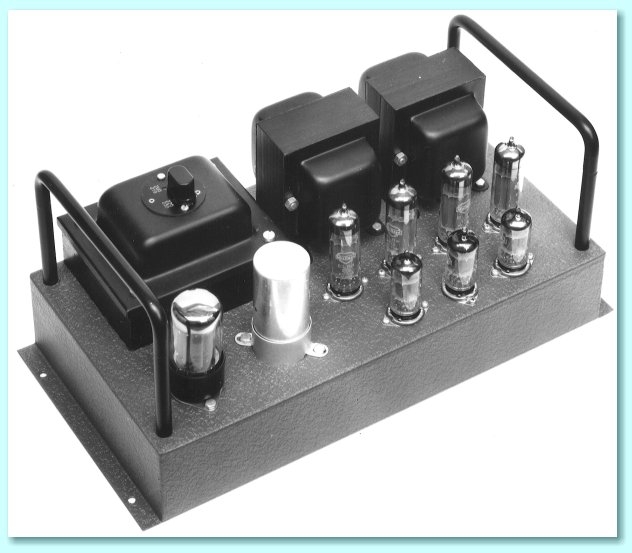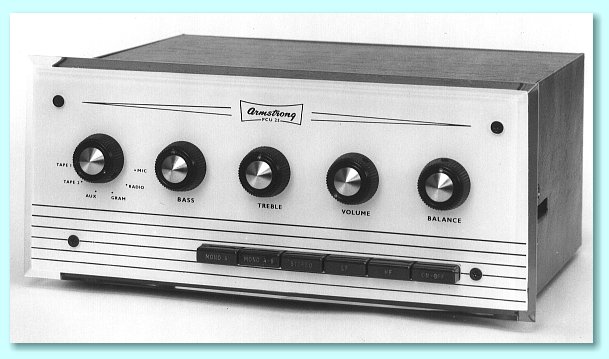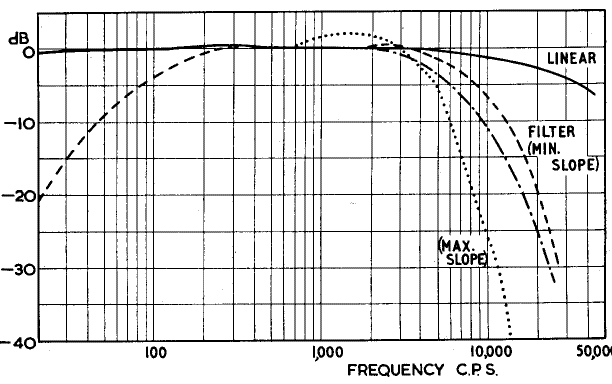

Specifications for A20
| |||
| Rated Output | 12 Watts (Output transformer tappings for 4, 8, and 16 Ohms) | ||
| Peak Output | 25 Watts per channel | ||
| Stability Margin | 20dB with rated resistive load. 15dB with 0.1 microF shunt load. | ||
| Frequency Response | 15Hz - 22kHz within 1dB | Distortion | <0·1% |
| Power Response | 20Hz - 18kHz within 1dB | Channel Matching | within 1dB |
| Input sensitivity | 410 mV for 12 W output | Output Valves | EL84 ultra-linear’s |
| Noise | -85dB | Feeback | 29dB |
| Damping Factor | 53 | Transient Response | 4 microsecond rise-time |
| Crosstalk | -52dB at 1kHz. -40dB at 10kHz. | Power Consumption | 110 W (inc PCU25) |

 The above photo shows the PCU25 pre-amplifier (control unit) that was recommended for use with the A20. Armstrong adopted a new external styling at the start of the 1960's with a white perspex facia with lines and legends in black. Cases were in what was described in adverts of the time as “an attractive maroon vinyl-hide covering”.
The above photo shows the PCU25 pre-amplifier (control unit) that was recommended for use with the A20. Armstrong adopted a new external styling at the start of the 1960's with a white perspex facia with lines and legends in black. Cases were in what was described in adverts of the time as “an attractive maroon vinyl-hide covering”.
